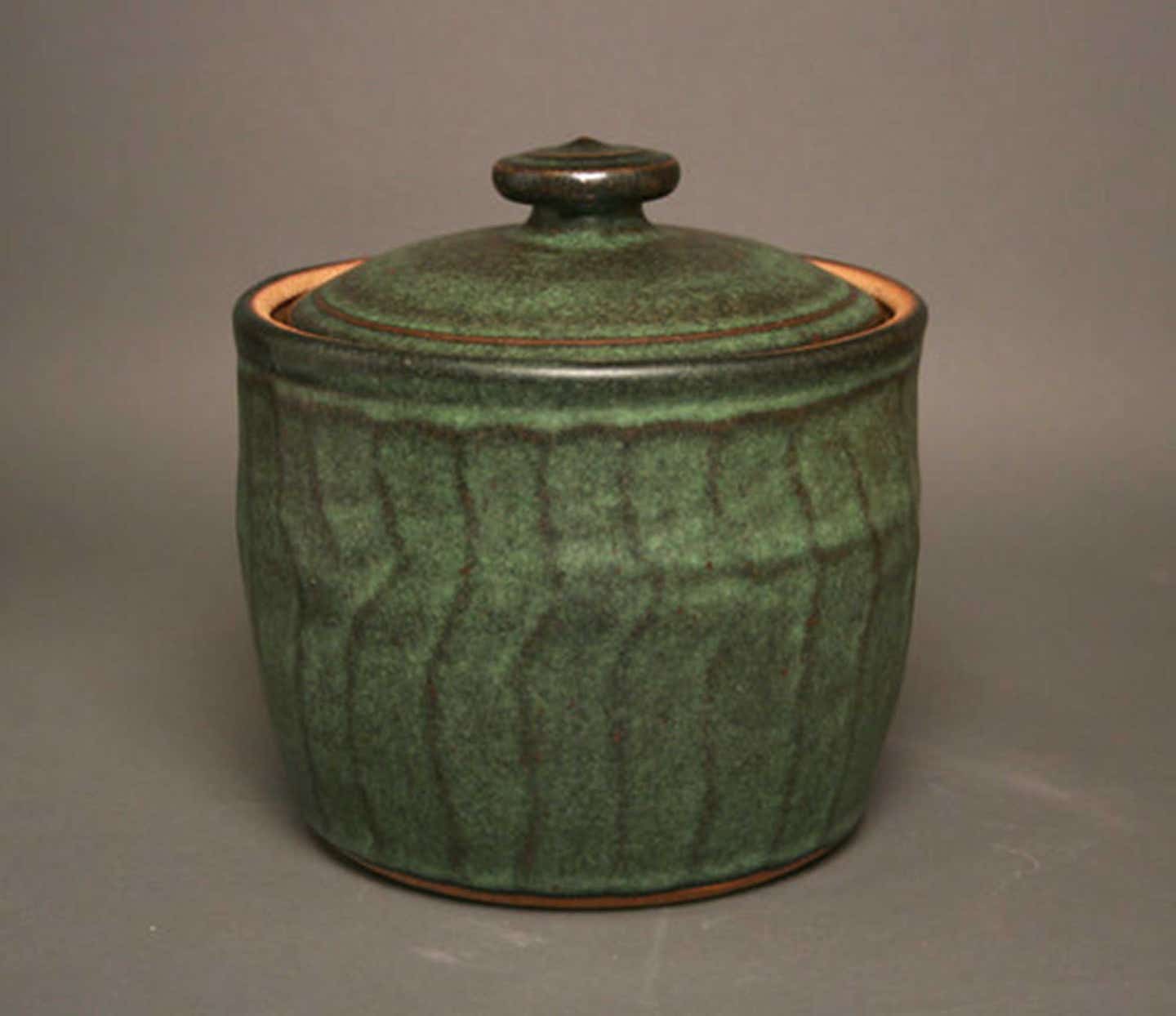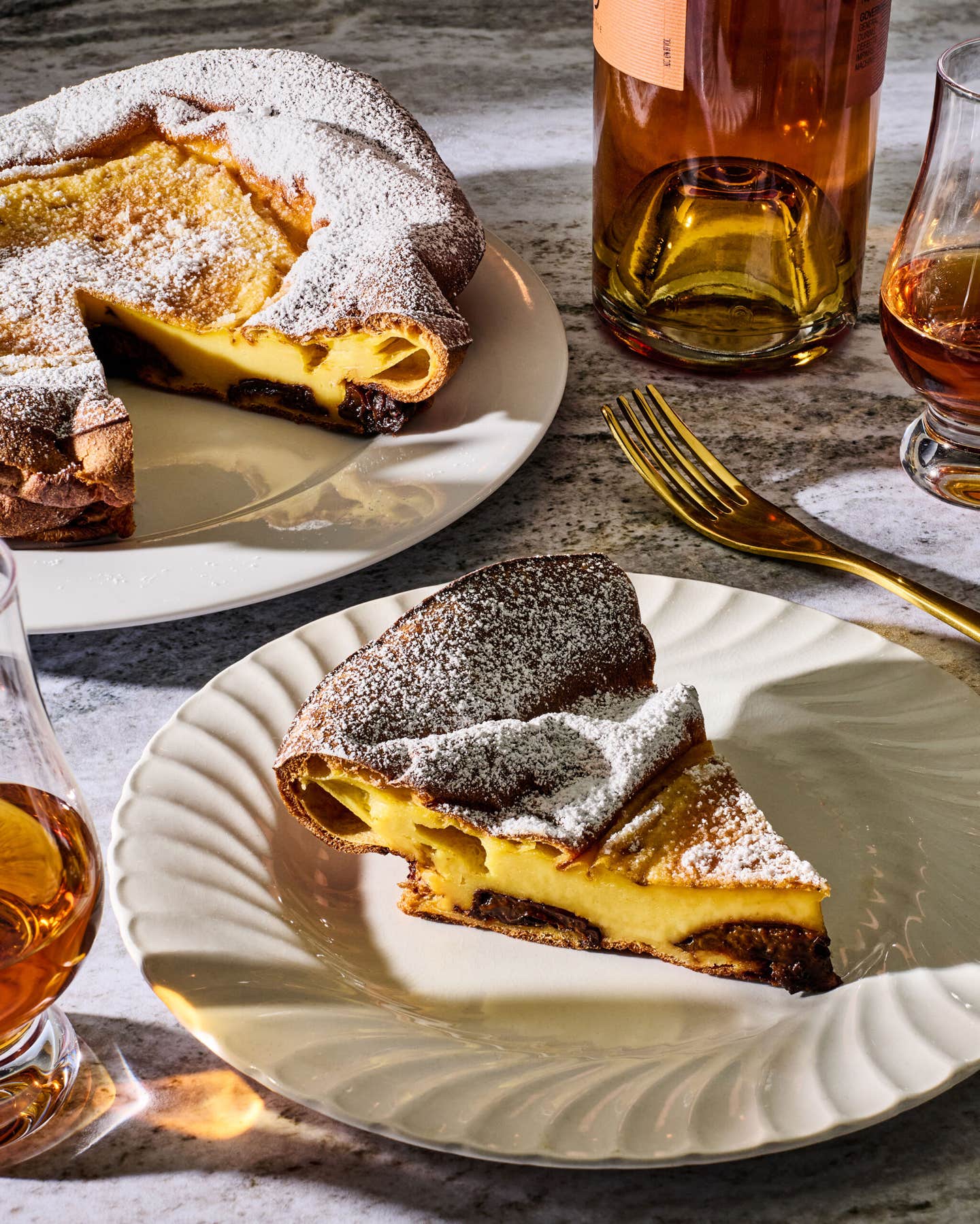
The 5 Best Crocks for Fermenting at Home
These aren’t your oma’s kimchi fermentation crocks
Humans have been fermenting foods to protect and preserve ingredients as far as 6000 B.C., but fermentation has possibly never been as hot as it is right now, when it's seemingly impossible to leave the house without encountering live culture kombucha, house-made sauerkraut, or lacto-fermented hot sauce. Some proponents say it cultivates healthy microbes that promote gastrointestinal balance and overall health. It undeniably creates sour and savory flavors that can't be accessed any other way. And it's an easy, fun project to do at home.
The truth is that you don't need a ton of gear. Lacto-fermentation requires an enclosed environment for the lactobacillus bacteria to do their best work while inhibiting the growth of yeasts and molds that can ruin your ferment and impart an off-taste. According to Cheryl Paswater, Chief Fermentationist at Contraband Ferments, any vessel can create the right oxygen-free or anaerobic environment. "Anything as simple as a Ball jar or a 5-gallon bucket works," says Paswater. "It should be easy for people to start fermenting foods at home."
Many cultures, though, have developed their own unique and beautiful fermenting vessels. Traditionally, Koreans relied on onggi, large earthenware crocks (they often range from one to 10 gallons) to ferment kimchi, doenjang, gochujang, and soy sauce. One important characteristic of the slightly porous onggi is that they “breathe,” meaning that liquids percolate through the vessel wall, and encourage anaerobic fermentation.
Germans and many other Western cultures also used stoneware crocks for preserving foodstuffs like sauerkraut, salted meat, milk, and whiskey at one time. "These were common in rural America through the beginning of the 20th century, though gradually replaced by glass bottles, tin cans, and other substitute containers," says Robert Sayers, Ph.D., co-author of The Korean Onggi Potter.
The traditional German stoneware crock design, with a water-lock, is still popular today. After the crock is packed with vegetables and weighted to keep the ferment submerged, a moat at the crock’s mouth is filled with water. The lid sits in it, and carbon dioxide created during fermentation easily bubbles out while air and bugs are kept out. The brine doesn’t evaporate and potentially unpleasant smells are kept in.
Avid fermenters swear that kimchi or sauerkraut layered in ceramic jars in the traditional manner is much more delicious than foods fermented in glass or plastic containers. “Much has been made of the health benefits of using onggi, particularly the fact that the jars allow the food to “breathe” during the fermentation process,” says Sayer.
The rise of home fermenting has resulted in an increasing demand for ceramic crocks. You can still purchase traditionally-made onggi and German sauerkraut crocks online. But a new wave of artisans are putting out functional yet stylish crocks that you’ll want to leave out on your counter to admire. Here are five handcrafted ceramic crocks made by American potters that are worth seeking out.
Inspired by "John Coltrane, e.e. Cummings, and Japanese wood fired ceramics," Daniel Bellow handcrafts his trumpet-silhouetted crocks in his Barrington, Massachusetts ceramics studio. Bellow's design, though more elegant with its fluted exterior and rich hues, includes a sturdy lid that keeps vegetables submersed in their naturally-forming juices, creating optimal conditions for anaerobic fermentation while the liquid forms. Bellow's only stoneware piece—his other wares are made of porcelain—is turned on his potter's wheel one at a time and fired in a gas kiln.
Colin Dyck was a farmer and fermentation enthusiast before he became a potter. When he couldn’t find a crock he liked four years ago, Dyck took matters into his own hands, literally. He bought a potter's wheel and practiced for months in his Santa Fe, Mexico basement before he finally came up with a design that he deemed suitable to display on the kitchen counter and was functional as well. Dyck’s water-sealed crocks come with weights—which come in four pieces, making them easy to insert and remove—to submerge vegetables below the surface of the brine. The crocks’ interiors are hand-glazed with a food-safe, glass-like white liner glaze that resists the acid produced during fermentation. And on firing, the matte white exterior glaze takes on distinctive specks from iron in the clay that bleeds through the glaze.
A full-time studio potter for 20 years, Careen Stoll started making crocks seven years ago when she started fermenting foods for their health benefits. While Stoll’s design is a take on the traditional German style with a water-seal, the feminine, hourglass shape and the lid with its integrated handle are from her own portfolio of forms. Three-part burnished porcelain weight stones are included and are easily placed and removed. Unlike most other potters who make stoneware crocks, Stoll prefers porcelain for its higher density and sleeker, refined results. “Porcelain also has the added benefit of being able to be burnished to a baby's butt softness without glaze, which produces a pleasant surface while eliminating labor,” she says. Stoll hand-throws her pots on an English treadle kick-style potter's wheel and fires the clay hot enough that’s it’s non-porous. To make her crocks more accessible, Stoll also works with Mudshark Studios in Portland, where they are hand-cast and finished with care.
Miki Palchick’s love of fermentation lends itself very well to her two other passions: farming and pottery. Based in Philadelphia, Palchick has been making pottery since kindergarten. Her fermentation crocks, pull from her own practice of gardening and preparing food in a Japanese-Jewish household, where pickles were a cultural intersection. Inspired by nature, Palchick starts every crock with 8 pounds of clay and handcrafts one-of-a-kind pots that are never perfectly symmetrical or smooth. She also experiments with earth-hued glazes that interact with surface textures and the dynamic atmosphere of the kiln. The results are unpredictable; and each crock comes out unique. Beauty is in the details: the inner lip has a moat for a water-lock, the lid has grooves to hold chopsticks, turn it over and it becomes a dish for tasting. Though fermentation crocks are her staple, her love of functional vessels has led her to make everything from palm-sized appetizer dishes to the Japanese donabe cooking pot.
Modeled after ancient Chinese water-lock jars, Sarah Kersten’s fermentation jars have gained repute for both their form and function. “I aspire to create pieces that are sculpturally beautiful, effortlessly functional, and of heirloom quality,” she writes on her website. Kersten’s designs respond to real needs, whether from her kitchen or other people’s kitchens. In her Berkeley, California studio, each stoneware jar is high-fired for durability and lined with an easy-care, food-safe glaze. They come with a set of weights to keep vegetables submerged, and are available in white or gunmetal gray with either a matte or gloss finish. To keep up with demand, Kersten’s jars are now slipcast from molds of handmade pieces.
Keep Reading
Continue to Next Story










